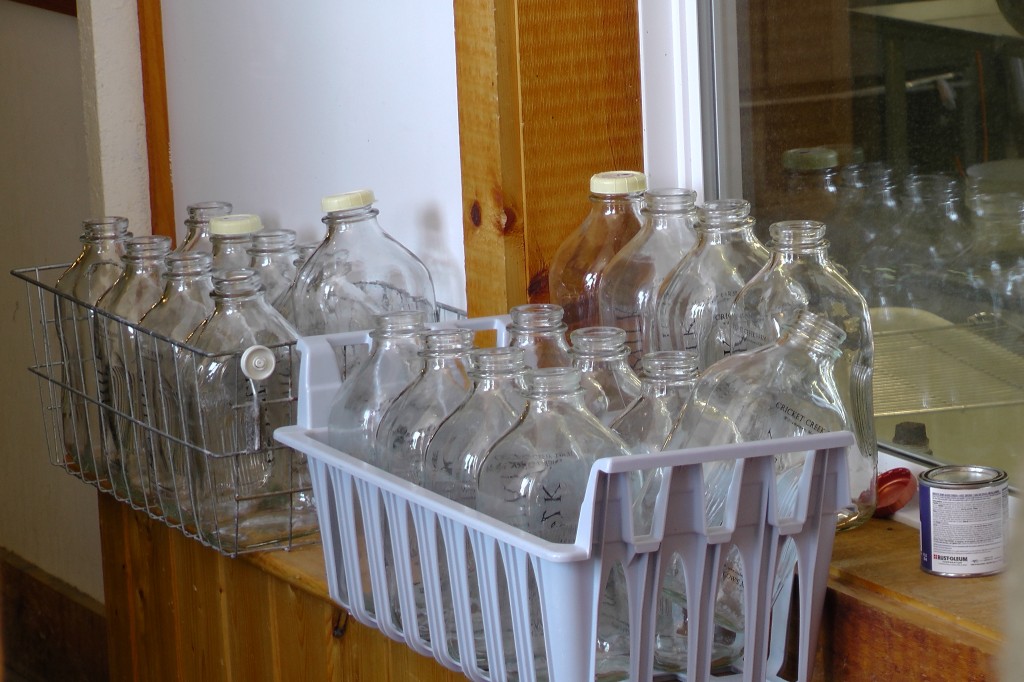By Sandy Buxton
Every year, dairy farmers talk and meditate on the milk price and where it is headed. Right now, we are still experiencing a strong system. And that looks pretty stable, so it begs the question: what should I do with my money?
Jason Karszes, PRO-Dairy, gave his top 4 items at the DFBS Wrap-Up meeting.
1. Pay off Accounts Payable (A/P) – pay off anyone you still owe to get you on track.
2. Line of Operating Credit – if you have an operating LOC with your financial institution, pay that down in hopes that you can borrow it back if the price goes south and you are short on cash.
3. Pre-pay during the year. Buying usable items (fertilizer, seed, supplies) when you have cash will allow you to get discounts, lower your cash operating expense for next year and possibly receive a lower purchase price (due to fuel increases, regular price jumps or inflation). Even better if you get paid interest to have money “on account”.
4. Accelerate debt payments or bank cash. One of the challenges of accelerating debt payments is the money is not always available for re-borrowing AND principal repaid is NOT deductible.
The farm’s overall goal should be to improve efficiencies and lower operating costs. This means the farm should plan for upcoming capital improvements and ideally use borrowed money to achieve them. Right now, debt is still very cheap (low interest rate) but to relieve pressure and stress on the business, having 6 months of debt payments sitting in the bank as cash will help to prepare for a down cycle.
All capital investment opportunities should be analyzed for what they will mean to the business. Each decision should be made to position the business for the next down cycle…because it will be coming…..or to reduce operating expenses.
Don’t forget – this is what to do with EXTRA money. Regular investment in some type of retirement system (SEP, Roth IRA, or regular IRA) should already be part of the business plan to set farm owners and managers up for the future succession/transition process.
Every year, dairy farmers talk and meditate on the milk price and where it is headed. Right now, we are still experiencing a strong system. And that looks pretty stable, so it begs the question: what should I do with my money?
Jason Karszes, PRO-Dairy, gave his top 4 items at the DFBS Wrap-Up meeting.
1. Pay off Accounts Payable (A/P) – pay off anyone you still owe to get you on track.
2. Line of Operating Credit – if you have an operating LOC with your financial institution, pay that down in hopes that you can borrow it back if the price goes south and you are short on cash.
3. Pre-pay during the year. Buying usable items (fertilizer, seed, supplies) when you have cash will allow you to get discounts, lower your cash operating expense for next year and possibly receive a lower purchase price (due to fuel increases, regular price jumps or inflation). Even better if you get paid interest to have money “on account”.
4. Accelerate debt payments or bank cash. One of the challenges of accelerating debt payments is the money is not always available for re-borrowing AND principal repaid is NOT deductible.
The farm’s overall goal should be to improve efficiencies and lower operating costs. This means the farm should plan for upcoming capital improvements and ideally use borrowed money to achieve them. Right now, debt is still very cheap (low interest rate) but to relieve pressure and stress on the business, having 6 months of debt payments sitting in the bank as cash will help to prepare for a down cycle.
All capital investment opportunities should be analyzed for what they will mean to the business. Each decision should be made to position the business for the next down cycle…because it will be coming…..or to reduce operating expenses.
Don’t forget – this is what to do with EXTRA money. Regular investment in some type of retirement system (SEP, Roth IRA, or regular IRA) should already be part of the business plan to set farm owners and managers up for the future succession/transition process.


